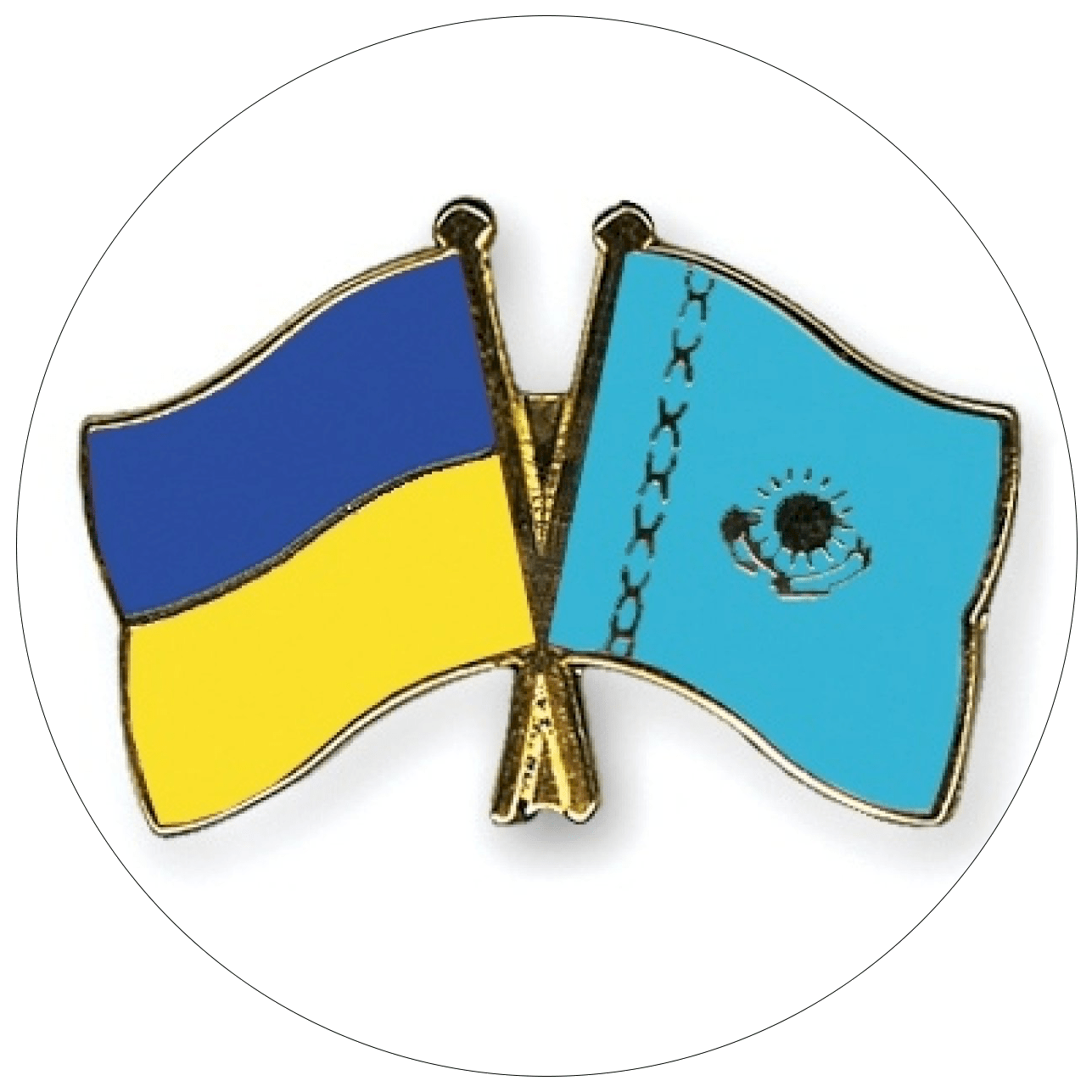Lebanese babylon
Yaroslav Razumov
“Aren’t you afraid to fly there?” asked my neighbors in the passport control line at the airport when they learned I was on my way to Beirut. They themselves were bound for Vilnius and Riga. I replied that I was not. For many years already, Lebanon had been a peaceful country, with a society that is more tolerant than some post-Soviet nations that are currently EU members. Then, three years ago, this was really so.
Lebanon completely amazed me: the country did not at all look like one in which a mere ten years previously a long-running civil war had just ended. That event had been the impetus for the reaction of my neighbors in the line. Throughout the years of the 1970s and 1980s, all newscasts on radio and television began with stories about Lebanon at war. Such words as “Beirut” and “Bekaa Valley” were acknowledged as synonyms for street battles and artillery attacks. This is to say that everything was just like it is now. Nonetheless, between these two Lebanese wars (to be more exact, wars on the territory of Lebanon, as the political motivations behind the two differ) were sheltered more than 15 years of peace. That was the time in which I was able to visit this wonderful country.
Even for such a region as the Middle East, Lebanon is quite an interesting nation, where powerful historical impulses have yet to relax, even after centuries. As a matter of fact, the country is neither a cradle of any worldwide religion, nor for any large empire. However, it has played another, very important, role. Lebanon is really a sort of Babylon, in which is held the representatives of many ethnicities and confessions, none of which holds the [absolutely] dominant role. Probably, following an angry Almighty striking down the would-be heavenly interlopers and forcing them to speak in other tongues, a certain moment occurred during which people already felt that they were indeed different, yet still maintained the desire to understand each other. This is how Lebanese society has existed over the centuries.
Many times, I have heard from the Lebanese (at least from those who are Christians) that they are not Arabs, but instead are Phoenicians. One can see a certain historical validity within such a statement. Ancient Phoenicia approximately corresponded to the Lebanese territory of modern times. Nevertheless, numerous, later historic and ethnic overlapping drastically altered the picture. Speaking today about a direct lineage of the Lebanese people from the Phoenicians would be incorrect. However, the fact that such an opinion would be stated is probably a manifestation of political and cultural sympathies, rather than antipathy [towards other Middle Easterners]. Yet the real lines of separation in the country lay not along ethnicity, but between those of different faiths.
The Lebanese Babylon is represented primarily by three large communities – Christians, Sunni Muslims and Shiite Muslims. This is, however, only at first glance. Very few people in our country know that there also exist Christian Arabs, as well as a plethora of denominations, including Maronites, Orthodox, Melkites, Protestant, and so on. Some of these groups lack representation in predominantly Christian Europe (except among those immigrants from Lebanon). As regards the Lebanese nation itself, these churches hold quite a number of believers, including those who are more radical than the ordinary European Christian. This may easily be noticed within any Christian church of Beirut. An Armenian Gregorian church even exists, as well as an Armenian Catholic church. Traditionally, the Armenian community in Lebanon is one of the most influential and respected, in comparison with other Armenian diaspora. As regards the other, relatively large national minorities, these include Kurds, Greeks, and even Turkmeni among them. A group of Russian emigres even exists, represented by the children and grandchildren of the first wave of immigration, following the collapse of the Russian empire. These are very elderly people, who tell quite moving stories from their past. These would be a good source for writing melodramas.
If we speak about the Islamic camp within Lebanese society, then aside from the traditional categories of Shiite and Sunni, various subgroups had also formed, the followers of which settled here. Probably the most exotic of these is the Druze, a monotheistic sect, believing in reincarnation, and which does not follow circumcision, nor do they consume pork or alcohol. I will underline that the Druze are also Muslims, though the Islamic world regards them as something other.
“This small country has traditionally been a hiding place for dissidents… They all lived side by side, quite often sharing the same locations. At the same time, each community jealously protected its dependents, shunning interference by outsiders.” This is a description of the ethnic, religious and political strata of Lebanon, from the Russian publication “The History of the East” (volume 3, Eastern Literature of the Russian Academy of Sciences, 2000). Currently, on Beirut’s streets, or on the highway along the Bekaa Valley, one may observe such a scenario quite clearly. Nevertheless, while presently writing, I recall that I am describing events that happened three years ago. As of today, bombs are dropping there…
Running a country with such a plethora of confessions, ethnicities and cultures has always been complicated. Additional to this is the difficult landscape of the country. As a matter of fact, Lebanon lay on two parallel mountain chains, one of which is located along the sea, and carries the eponymous name of the country, while the other is known as the Anti-Lebanon, denoting placement along the other side of the nation’s territory. Control of the mountains, as well as the somewhat inaccessible valleys between them, has always been a problem for any regime. Even today, driving along those serpentine roads is quite scary. The Ottoman Empire, which controlled Lebanon longer than any other power, even limited itself to maintaining but externalized formal authority, instead granting power to local dynasties within a vassal system. To be honest, all tourists visiting Beirut come on a [seemingly] mandatory trip to Star Square, in which the Ottoman authorities hung six Lebanese independence fighters during the nineteenth century. While standing on this square, one tries to rid oneself of the thought that after receiving their independence, the citizens of Lebanon slaughtered each other on a scale much grander than ever before. Yet, this situation is not infrequently repeated within world history.
Without this short historical introduction to the religious and ethnic background of Lebanon, understanding the tragic history of the people over the past few decades would be impossible. One should note that those events causing the most bloodshed happened there starting from the 1970s up to the end of the 1980s, during which the world was generally enjoying relative geopolitical peace (certainly there were notable exceptions, including Afghanistan, the Falklands, and Granada, among others). Some regional players were also active, as well as internal factions of Lebanon itself. Besides the two major players – the Soviet Union and the USA – some smaller ones, including Israel, Iran, Syria, and probably other Arab countries, influenced the civil war that rampaged Lebanon from the mid-1970s. That was a horrible war. The three primary communities became three militaries, with smaller groups allying with one or another of them. These fought each against the other two. The frontline quite often became the edges of communities, which, depending on the group dominant in that area, homogenized into Christian, Shiite or Sunni. This continued for 15 years. An interesting detail is that during the whole period the Soviet embassy was guarded by the Druze.
It is a small country in geographically important and politically complicated region. This actually brings forth an axiom: whatever you as a nation do, very little depends on you. At any moment, any outsider may pull at the strings of your traditionally internal problems, starting everything anew.
A surprising fact is how much Lebanon has always been able to achieve during the periods of peace within its history. These productive times occurred before the civil war, and after it – prior to the most recent conflict. Following independence from France in 1943, the country quickly became one of the most economically dynamic of the Middle East. A quite favorable geographic location and the historical propensity of the population towards commerce (directly reflective of the country’s placement), made the nation the trade and financial center of the region. They say that the first temple in Jerusalem was built out of the logs from a huge Lebanese cedar, which had been exported by Phoenicians. So, one way or another, the Israeli-Lebanese relationship has quite a long history.
In the 1960s and 1970s, the nation was known as the Switzerland of the Middle East, due to the highly developed level and significance of its banking sector. The then almost 30-year long period of peaceful existence gave much to Lebanon. In this country, one can hear the opinion that the civil war had been provoked by outside forces, which regarded Lebanon as a growing regional competitor. Following that war, in the 1990s the nation again achieved financial stability, while the traditionally heterogeneous scene on the religious front created no barrier to this development. When the builders of the tower of Babylon wanted to find agreement amongst each other, they managed to find a solution. When leaving Lebanon, the French constructed a unique political system there, which took into account the standing religious and political peculiarities of the country. In accordance with unwritten, basically oral rules, only Maronite may be president. Only a shiite can be prime minister. While only a Sunni can stand as head of the Parliament. This division of labor in accordance with confessional lines still exists, even within the agricultural sphere. Usually, the Maronites specialize in the growing of apples, Sunnis in citrus and bananas, Orthodox Christians in olives, and Shiites in Tobacco. In general, agricultural is quite developed in the country. I have never seen potatoes so large as those in the Bekaa Valley. It is simply impossible to imagine such a size. There, one may also observe vineyards for wine – of course a specialty of the Christians.
I had a very strange feeling when passing checkpoints along the Bekaa Valley, mostly populated by Shiites, and where one may view huge portraits of Ayatollahs (religious leaders of the Shiites) along the roads. One all of a sudden enters a well-equipped winery, which offers tasting of red, pink and white varieties. The locally-produced wines of the company Ksara can easily compete among the best in the world. However, the conflicts that arise each 10 to 15 years do not afford many opportunities.
Then, after tasting the wine, and another hour by car, one arrives at a location that is one of the most astonishing sites of the East – the city of Baalbek. The place is small and quite hot. During the period of the Roman Empire (and even before, as the earliest known culture is estimated to have occupied the area around 1800 B.C.), it was considered hot also. Due to this, the city received its ancient name of Heliopolis, or the “City of the Sun”. However, it was not small at that time. The famous Baalbek terrace includes the ruins of several huge ancient temples to Bacchus, Jupiter and Venus. Temples dedicated to the gods and goddesses of free love and wine still remain on the land now occupied by the conservative Shiites. Indeed the course of history congealed into a surprising motif. The temple of Bacchus has been best preserved, and its dimensions astonish all who see it. These are now ruins, but they are incredibly awe-inspiring. At the same time, they do not shame with their size, but compliment with their loftiness. It is said that the acoustics are quite excellent here, and that the best musicians in the world often give concerts on the Baalbek terrace. When I was wandering among the ruins, local workers were placing chairs in the center of the site, as Rostropovich was supposed to be performing that evening.
Among the straight line of the temple’s tall columns, one has moved from its base to become slightly angled, and leans against the temple wall. It remains in place purely due to the pressure of its own weight. Excursion guides say that this is the result of an earthquake that occurred 2,000 years ago. When now radio stations broadcast news about the current bombing of Lebanese territory, one and the same thought strikes my fancy: is that column still standing?
Beirut has always given the impression of a most beautiful city, having all the attributes of other such respected ones, such as modern stores and expensive cars. Depending on the religious orientation, very beautiful women are dressed either in European style or in conservative fashion that has been somewhat westernized. In restaurants with traditional Lebanese cuisine, young Lebanese girls with the scarves common to Islam adorning their heads (they do not wear chadra there, at least not in Beirut, were smoking Kalyan and energetically doing some folk dance. This was not the behavior of people capable of long-term fighting in such a cruel manner over mere differences in religion.
The country has huge potential for tourism, in contradiction to its small territory, which is 10 times less than that of the earlier delineated Almaty oblast in Kazakhstan, prior to its extension all the way to the city of Taldikorgan. In Beirut, mosques from the middle ages, temples of the Crusaders, and uncovered Roman bathhouses sit side by side. At the edge of the city, in the mountains, one can find the fantastically beautiful cave of Jeita Grotto, which includes a wide selection of stalagmites and stalactites, with underground rivers the color of aquamarine. They say that during the civil war one of the groups hid its cache of arms their. Nonetheless, the use of this potential tourist attraction runs across the same problems as the export of Ksara wines – permanent instability within the country. The paradox of the modern, international economy is that some states do not need to create [industrial] clusters, as in some there already exists an ample supply. While in some nations a lack of political stability negates their use. Whereas, others have the gift of stability, instead having problems with real clusters.
Starting form the seashore, Beirut climbs step by step up Mount Lebanon. The construction boom, which happened over the last ten years, considerably decreased the forested area that had previously covered almost everything from the seashore to the peaks of mountains. There are, nonetheless, many trees remaining, which create an amazing picture. Bright, though with some haze, and then a line of light, modern buildings, followed by pine forests, and finally comes the mountaintop. At the upper reaches of [Mount Lebanon] stands a Christian church, and on nearby Mount Harissa one may behold the statue of God’s mother, who seems quite Lebanese. People of different faiths come to worship her. Probably, peace has been the most requested blessing of her over the past few decades. As for the mother of God, she calmly gazes down on Beirut, hands spread wide. Both she and that leaning column in Baalbek have for me become the symbols of the destiny of this amazing and long-suffering nation.

 Поддержать
Поддержать
 Smart
Smart  Культурная среда
Культурная среда  Общество
Общество  Политика
Политика  "Законы XII таблиц"
"Законы XII таблиц"  Бизнес
Бизнес  Досье и мифы
Досье и мифы  Асар в Украине
Асар в Украине 


Комментариев пока нет